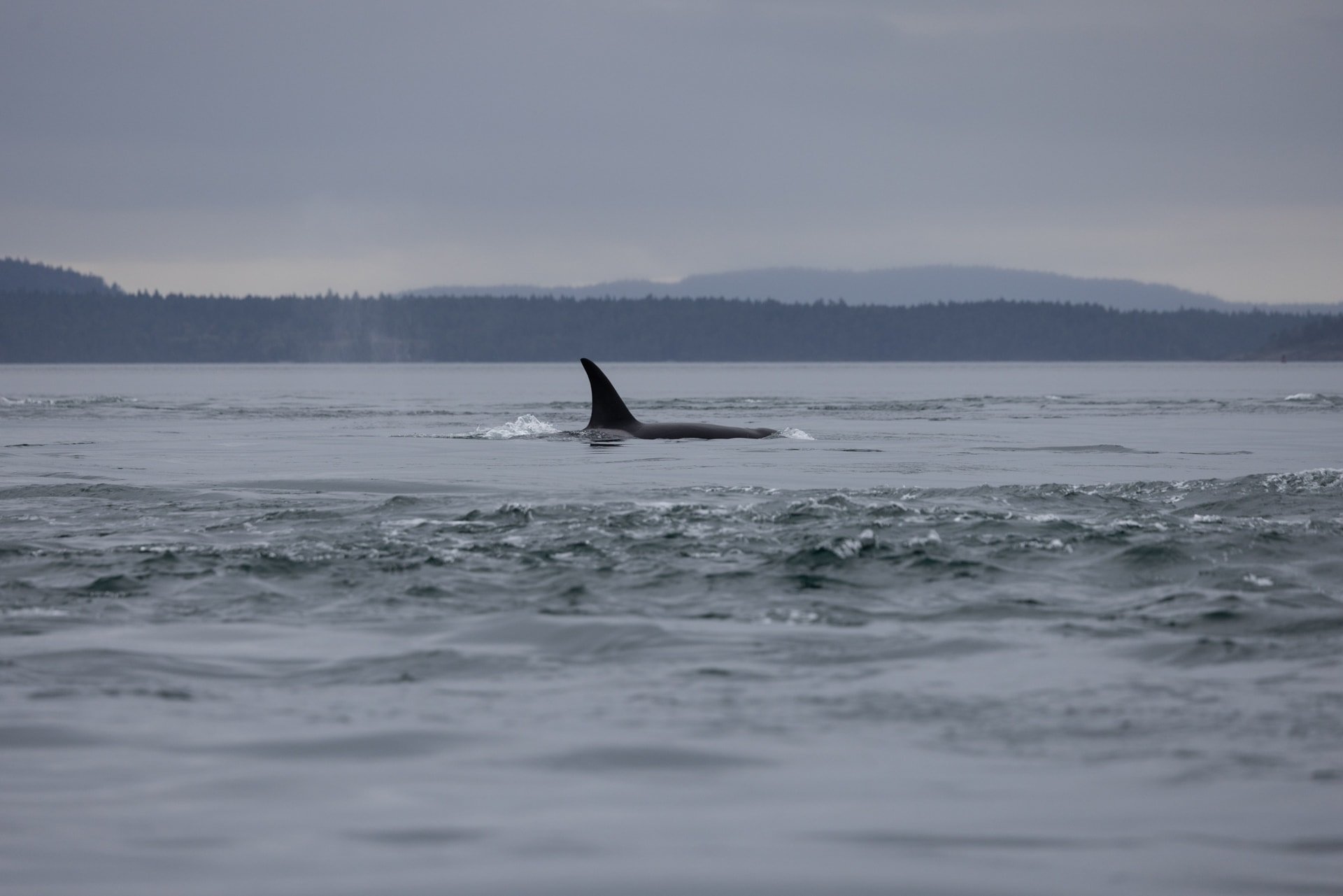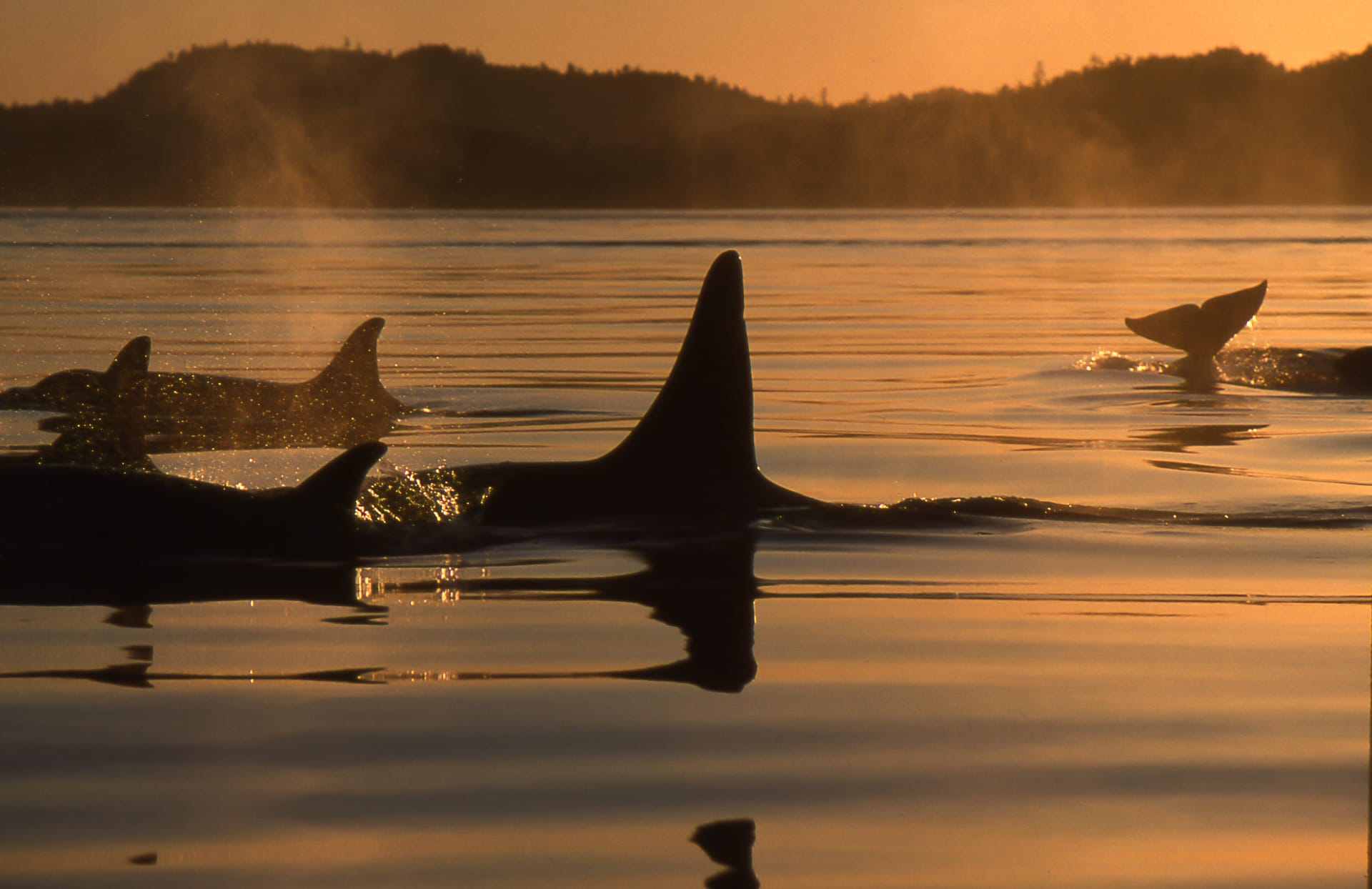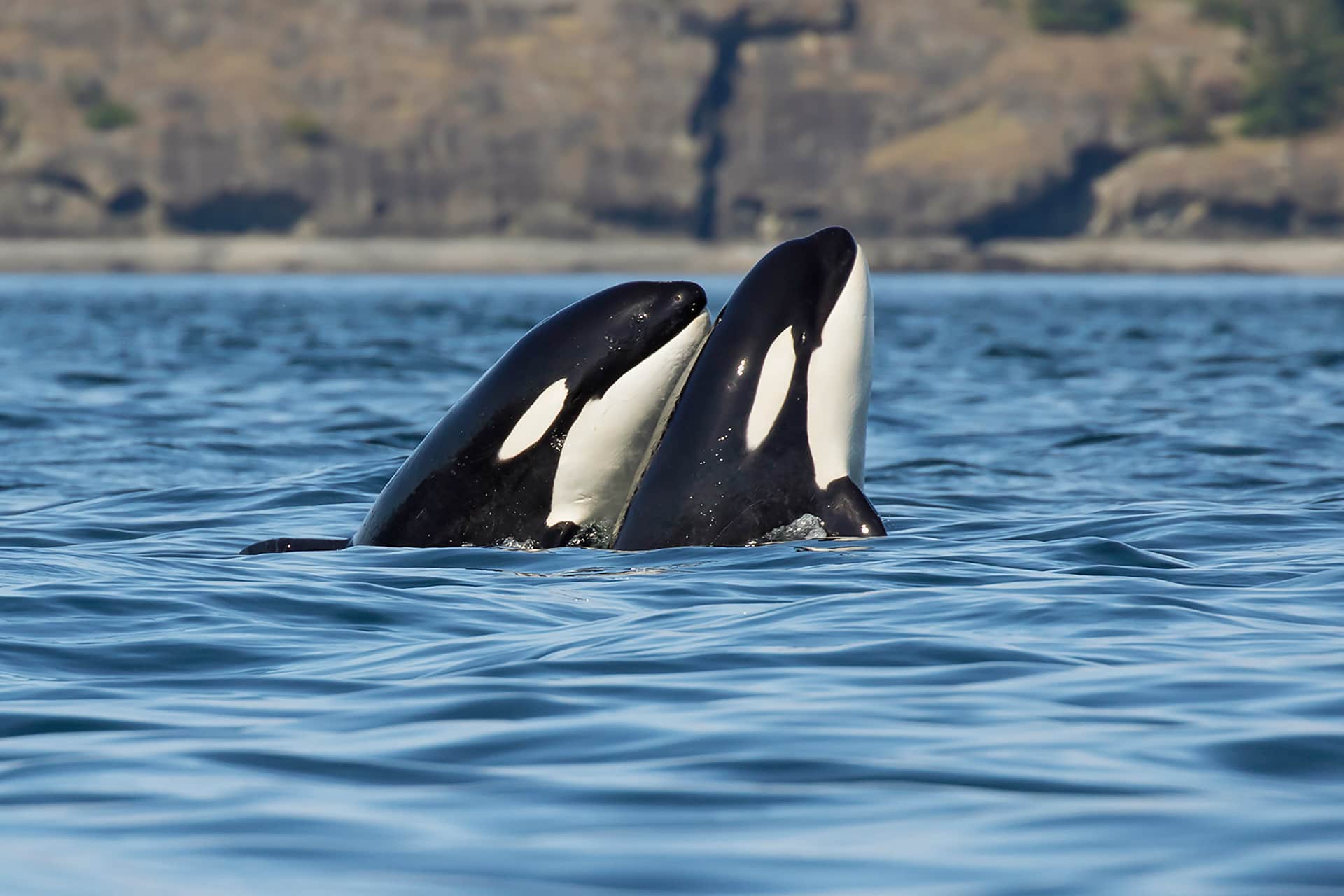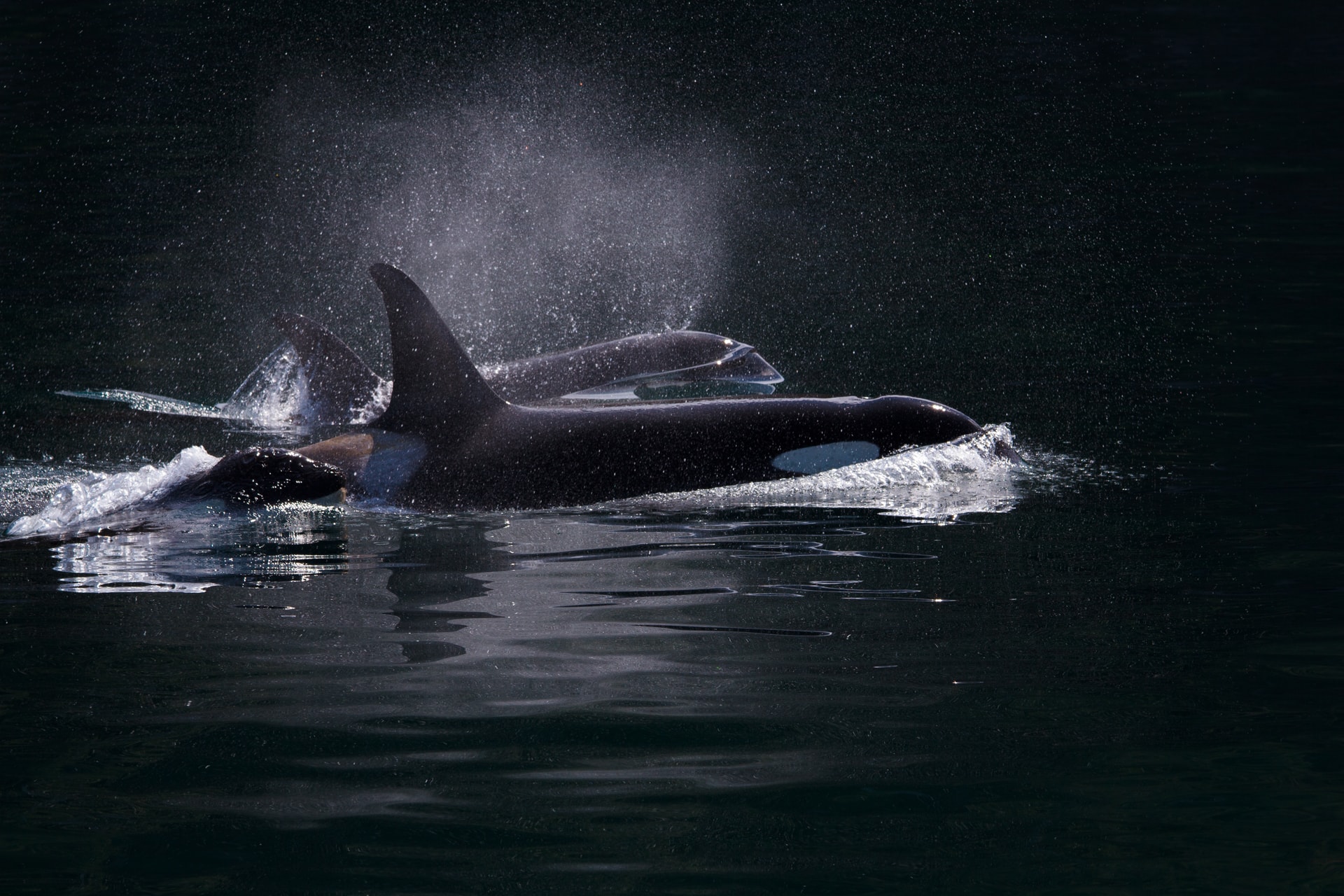
The killer whales of the Pacific Northwest are the most studied in the world. Could the cultural, physical, and genetic differences between the fish-eating residents and mammal-hunting transients, now known as Bigg’s, be sufficient to warrant new species status? A recent study led by NOAA Fisheries concluded so.
What was the study?
What is a species? The authors chose this definition: “a separately evolving lineage composed of a population or collection of populations.” To find evidence in support of this, they posed four questions:
Distinctness: Are the ecotypes genetically distinct?
Differentiation: Is there evidence of ongoing male-mediated gene flow? (interbreeding between ecotypes)
Diagnosability: Are individuals diagnosed based on genetic and/or morphological characteristics? (if you just had DNA or a skull, could you “spot the difference?”)
Divergence: Is the divergence between the ecotypes sufficiently large to indicate separately evolving lineages?

Fig. 17. Orca ater Cope; Juan de Fuca Straits, 1868.
What evidence did they find?
Ecology
The two northeast Pacific ecotypes specialize in different prey types. The skills needed to hunt fish vs. mammals shape a unique culture that orchestrates their foraging strategies, including when, where, and how they cooperatively hunt.
Foraging strategy determines social structure within a community or population. It also shapes language and its use. Resident killer whales forage in large groups, averaging 18, whereas Bigg’s rely on stealth, so their group sizes are smaller (2-6), and they’re quiet while hunting intelligent mammals, whereas residents “are highly vocal, communicating with each other and using echolocation to detect prey.” The ecological evidence supports distinctness and differentiation.
Morphological (physical) Characteristics
Scientists can readily distinguish between these ecotypes on sight. e.g., size, dorsal fin shape, saddle patch (open vs. closed), and eyepatch pigmentation. Aerial photographs confirm that “Bigg’s killer whales show significant differences in body length and condition. Bigg’s are longer and more robust than residents.”
Evidence from strandings and artifacts held in museum collections shows that Bigg’s skull and jaw structure are distinguishable from residents, as they have adapted for “biting and gripping large prey.” Fossils of killer whale ancestors suggest they evolved as fish eaters and that adapting to hunt mammals is a more recent phase of killer whale evolution, which this study further supports. The physical evidence supports distinctness, differentiation, and diagnosability.
Genetics
Analyzing mitochondrial DNA passed from mother to offspring makes it possible to trace ancestry. Based on this alone, the authors found these two ecotypes would qualify, at a minimum, as two distinct subspecies of Orcinus orca.
Genomes show that these ecotypes shared a common ancestor and that Bigg’s diverged 200,000 to 300,000 years ago—while residents diverged later—around 100,000 years ago. Further genetic evidence shows that as Bigg’s switched to hunt mammals, their genes and proteins changed to metabolize this prey.
There is no evidence of ongoing or recent mating between residents and Bigg’s (in the last 10,000 years). However, genomes indicate “historical or episodic gene flow” between residents and Bigg’s. The authors propose this may be indirect, with genes passing through another ecotype, such as mating with offshore or eastern tropical Pacific killer whales.
The study showed that it was possible to make a “near-perfect assignment of individuals to ecotype based on genetic data alone.” For example, in 2023, researchers ruled out missing K44 Ripple as a victim of crab gear, as recovered skin cells were Bigg’s. The genetic evidence, therefore, supports divergence.
Two new species
Based on all the combined evidence, they concluded, “We recommend that resident and Bigg’s killer whales be recognized as species distinct from the globally distributed Orcinus orca, and from each other.” They proposed Orcinus ater for resident fish-eating killer whales and Orcinus rectipinnus for Bigg’s mammal hunting killer whales.
This is according to a scientific naming convention. These species names were first proposed for killer whales in 1869 by Charles Scammon and Edward Cope in their publication, “On the Cetaceans of the Western Coast of North America.”
Scammon was a whaling captain for 11 years, later regarded as a naturalist after publishing his drawings and observations. A renowned paleontologist, Edward Cope, proposed two killer whale species names based on Scammon’s accounts.
Continued below...
Scammon recorded, “I am fully convinced that there are at least two species of Killers on the coast: one with a dorsal fin excessively long, narrow at the base, standing very erect; the other species with a shorter fin, somewhat curved, much broader and slanting backward.”
Orcinus rectipinnus: derived from “recti,” Latin for upright, and “pinna” for fin.“
The dorsal fin extremely elevated “six feet or more in the larger males. Color black, more or less white below with white lines on the sides from the eye. No large white spot behind eye. This species appears to be distributed from California southwards.”
One killer whale killed by Scammon had fed on seals. In the publication, his sketch of this female is labeled “O. Rectipinna, California coast.” In fact, he reported that “This species appears to be distributed from California southwards.”
Consequently, Orcinus Rectipinnus is the proposed species name for Bigg’s, while retaining this common name to “honor Dr. Michael Bigg, who pioneered study of North Pacific killer whales in the 1970s.” This species name would apply to mammal hunting populations of the northeast Pacific from northern Baja California, Mexico to Alaska, and the northwest Pacific, eastern Russia, and northern Japan.
Orcinus ater: Latin for black
“The dorsal fin much shorter, wider, and more obliquely directed. Black, with a large white spot behind the eye. A brown dorsal crescent behind fin. The inferior surfaces appear to be entirely black, or nearly so.” Scammon recorded this species from “Oregon north to the Aleutian Islands.” He based his illustration of this species on a sighting in 1868 in the Juan de Fuca Straits (Salish Sea).
Consequently, Orcinus ater, if accepted, will apply to the Southern Resident killer whales and all other resident fish-eating killer whale populations from Oregon to Alaska, eastern Russia, and northern Japan. A common name to replace “residents” is in consultation with tribes.
In fact, the 1970s descriptors of resident and transient no longer apply. Transients are seen more frequently today due to marine mammals rebounding after an end to hunting. Residents now seldom visit their Salish Sea feeding grounds due to overfishing and habitat loss of their primary prey, Chinook salmon.





